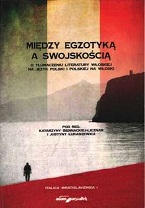
We kindly inform you that, as long as the subject affiliation of our 300.000+ articles is in progress, you might get unsufficient or no results on your third level or second level search. In this case, please broaden your search criteria.



















The aim of this article is to present a short history of Polish sonnet from the end of the 1500s to the beginning of the 1800s, paying special attention to the translations from Italian. Although first Polish sonnets by Jan Kochanowski were his original composition, the translations from Italian had a very strong influence on Polish poets for as long as to the beginning of the Nineteenth Century. The most eminent authors of sonnets were also translators themselves: in the 1600s free translations of Giambattista Marino had crucial influence on Polish literature. While the translations in the 1500s and 1600s appear very faithful to the Italian form of the sonnet, the few sonnets written in the 1700s tend to be closer to the Polish metric. The return to the sonnet’s classic form took place at the beginning of nineteenth century. The transformations of Polish translators’ attitude towards sonnet’s form are interpreted according to I. Even-Zohar’s literary polysystem theory and J. Holmes’s concept of poetry translation.
More...
The article presents an exceptional case of literary works published only in translation: "I dubbi di Salaì" and "L’uovo di Salaì" by Rita Monaldi and Francesco Sorti, a writing Italian couple. A tension between the exotic and the familiar, characteristic of these novels and made clear during the translation, is shown on the background formed by Polish and international reception of the works. The analysis concerns some linguistic problems linked to the complex stylization of the texts, the references to the historic facts and the intertextual allusions, as well as the strategies and solutions adopted by the translator, such as the compensation and the translator’s notes.
More...